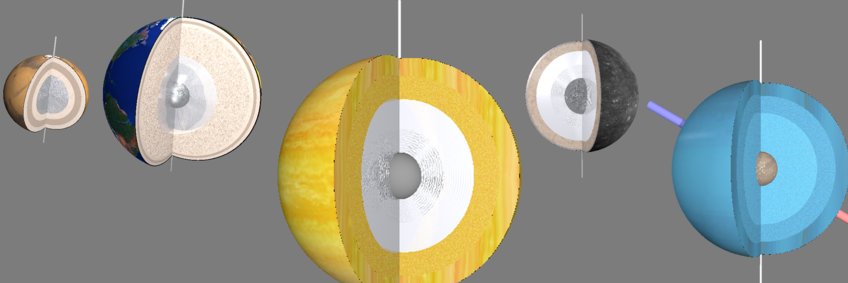
Planetary Interiors
Understanding planets requires to know their interior. This is extremely challenging since most of our knowledge only scratches the surface.
The processes in the interiors of a planet are crucial for how it develops and whether it can host life. Researching these processes is therefore an important concern of the MPS. To do this, the scientists in the group “Planetary Interiors” use a wide variety of tools: theoretical considerations and elaborate computer simulations help to understand the dynamics of rocky mantles, iron cores and the deep atmospheres of gas giants; scientific instruments on board landing platforms and satellites such as BepiColombo and Juno provide important data. A particular research focus is on modeling the dynamo process that generates the planetary magnetic fields. These magnetic fields allow valuable inferences to be made about the internal processes that would otherwise remain obscured. Computer simulations of the dynamo mechanism provide the necessary link that connects the observed fields to these processes.
The group is involved in the MPO-MAG and BELA instruments on board ESA's Bepi-Colombo spacecraft.
Hot Jupiters are another field of research. These are gas giants orbiting their star in close proximity. Due to the extreme temperatures of 2000 degrees and more, the electrical conductivity becomes so high that strong magnetic fields are generated in the outer atmosphere of these exoplanets, which decisively influence the dynamic processes.


